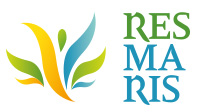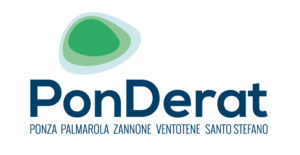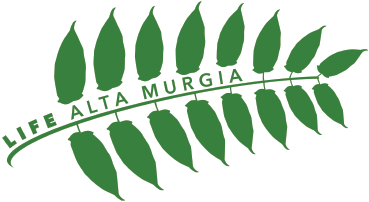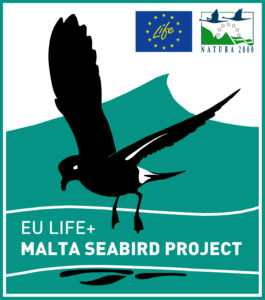The project aims to eradicate the invasive alien plant species Ailanthus altissima from the Alta Murgia National Park.
The main objectives of the project are to:
- halt the loss of EU biodiversity and strengthen its conservation in the Alta Murgia National Park, the fulfilling the “EU biodiversity strategy to 2020“;
- safeguard and improve the conservation status of the most important natural habitats and wild species in the Alta Murgia National Park, protected under the EC Habitat and Wild Birds Directives;
- sustain the biological functionality of the Park’s natural ecosystems, thus reducing its vulnerability to any current or expected climate change;
- provide an innovative, eco-friendly and sustainable chemical strategy to eradicate and control A. altissima that wil also increase efficacy and minimize herbicide use, thus implementing the Directive on the Sustainable use of pesticides;
- enhance environmental and human health protection against the risks and impacts posed by exposure to chemicals in Natura 2000 sites;
- disseminate the project results and improve the knowledge base among the local population and stakeholders with regard to biodiversity, invasive alien species and the invasive power of ailanthus, with the aim of sensitizing public awareness and preventing the new introduction of such species;
- detect, map, monitor and inventory ailanthus-infested areas in the Alta Murgia National Park;
- train farmers and land owners on herbicide use in natural areas.
The main goal of the project is the protection of the breeding population of Yelkouan Shearwater (Puffinus yelkouan), one of the few species of seabird that occurs in the Mediterranean, and whose breeding population on Tavolara is estimated to comprise between 10,000 and 13,500 pairs; the Tavolara colony is by far the largest in the world, considering that the global population of Yelkouan Shearwater is estimated at 15,000 – 30,500 pairs.
 RES MARIS – “Regenerating threatened habitats in the marine area of Capo Carbonara, Sardinia”, is a project co-financed by the EU LIFE+ programme, whose mission is the conservation and regeneration of the marine and terrestrial ecosystems in the dry and submerged beach. In particular, the project focuses on priority habitats *2250 “Coastal dunes with Juniperus spp.”, *2270 “Dunes with Pinus pinea and/or Pinus pinaster forests” and 1120* “Posidonia beds (Posidonion oceanicae)” identified in Directive 92/43/EEC and contained within the ITB040020 SCI “Isola dei Cavoli, Serpentara, Punta Molentis e Campulongu”.
RES MARIS – “Regenerating threatened habitats in the marine area of Capo Carbonara, Sardinia”, is a project co-financed by the EU LIFE+ programme, whose mission is the conservation and regeneration of the marine and terrestrial ecosystems in the dry and submerged beach. In particular, the project focuses on priority habitats *2250 “Coastal dunes with Juniperus spp.”, *2270 “Dunes with Pinus pinea and/or Pinus pinaster forests” and 1120* “Posidonia beds (Posidonion oceanicae)” identified in Directive 92/43/EEC and contained within the ITB040020 SCI “Isola dei Cavoli, Serpentara, Punta Molentis e Campulongu”.
The EU LIFE+ Malta Seabird Project aims to create an inventory of marine Important Bird Areas (IBAs) for three seabird species; Yelkouan Shearwater (Puffinus yelkouan), Cory’s Shearwater (Calonectris diomedea) European Storm Petrel (Hydrobates pelagicus).
It is the largest research project focussing on the populations of these seabirds breeding in the Maltese Islands. The project will build on the knowledge obtained by the previous LIFE Yelkouan Shearwater Project completed in 2010 and through state of the art technologies will identify areas at sea that will be designated for protection by the Malta government.
The project aims to facilitate Falco eleonorae adaptation to the ongoing and future climate change by the implementation of a series of conservation actions.
Specifically, the objectives of the program relate to:
– improvement of breeding performance of the species, by (a) reducing egg losses and mortality rates of nestlings (b) improving the quality and increasing the availability of nesting sites and (c) improving prey availability and quality.
– improvement of the species’ conservation status at its foraging areas both within its breeding and wintering range by (a) identifying foraging areas utilized by the species, (b) assessing the quality and impact of land use in these areas, (c) networking among experts and organization of workshops to help design and promote efficient mitigation measures.
 The PonDerat Life is a project co-financed by the European Union which has as its objective the improvement of the state of conservation of species and habitats of the Pontine islands.
The PonDerat Life is a project co-financed by the European Union which has as its objective the improvement of the state of conservation of species and habitats of the Pontine islands.
In particular, the aim is to protect certain species of seabirds such as Cory’s Shearwater and Shearwater (albatrosses Mediterranean), severely threatened by predation of rats on the chicks, and habitats typical of the Mediterranean islands, present with flaps important and significant in their own Pontine islands, endangered by the presence of foreign animal and plant species.
 Life Go Park project has decided to focus on the relationship between man and nature. The direct experience in touch with nature is the best way to increase the level of attention and sensitivity about the protection of the biodiversity and about the environmental conservation.
Life Go Park project has decided to focus on the relationship between man and nature. The direct experience in touch with nature is the best way to increase the level of attention and sensitivity about the protection of the biodiversity and about the environmental conservation.
This process of citizens awareness is not only based on knowledge, but also on direct experience of visiting and of participating the protected area. That process could be the key to reduce the gap and to increase in people the attention and sensitivity about environment problem.








